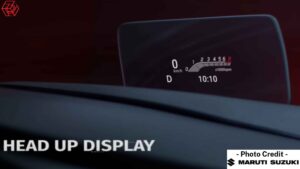HUD this an interesting topic that only shares with you and futuristic car look, however, we understand them, had also undergone a major transformation. Engineers & designers’ intelligence and imagination have provided everyone the advantages that we’d only imagine. HUDs are projections/displays that upgrade our experience of information. Such provide that safer overall driving experience since you shouldn’t have to shift your eyes and therefore can concentrate on driving and learning about the surroundings.
In this article
What is a Head-Up Display?
HUD technology has its origins in aviation: the first incarnation of the technology was visible on British Royal Air Force (RAF) fighter planes with projected gunsights as early as the 1940s. Since then, the technology has advanced substantially, and each generation of HUD has already been able to display more information with greater clarity. HUDs were created to give pilots access to all relevant information without needing to look down at their instrument panel, decreasing distraction and, more importantly, allowing them to live.
While the automotive industry recognised the benefits of HUD technology, it wasn’t until the late 1980s that it was used in a vehicle. In 1988, the Oldsmobile Cutlass convertible’s limited Indy pace car edition became the first automobile to use a head-up display (HUD), which featured a relatively modest readout of the speedometer and indicators. The reception to this innovation was so strong that Oldsmobile decided to make it an option across the Cutlass line, and other GM automobiles, such as the Chevrolet Corvette, followed suit. However, with the 240SX in 1989, Nissan became the first mass market carmaker to provide HUD as a standard feature.
Configuration
A HUD is made up of a convex lens, a cathode ray tube attached to the lens, and an LED display at the lens’ focal point. This configuration creates parallel rays that can provide an image with all of the information the user requires. A combiner (special mirror) is also utilised to make the image directly visible to the eye, eliminating the need to adjust your sight.
Heads-up displays (HUDs) come in a variety of designs
In the automotive sector, there are two basic types of HUD systems: projection-based and reflection-based. On a carefully prepared area of the windscreen, the information of the former project like speed, turn-by-turn navigation, rev counter, and real-time fuel usage using LED lights or, more recently, lasers. The final image is very clear with this setting, and there is little to no light bleed in darker driving circumstances. However, this approach is more expensive and difficult to implement.
Reflection-based HUD systems, on the other hand, use a digital display that reflects the desired information (using positive and negative spaces) on a specially built glass screen, as the name suggests. When compared to the projection-based system, this technology is less crisp and has more light bleed when utilized in dark conditions. However, the substantially lower price tag and the fact that it can be utilized as a plug-and-play solution in most cars without much calibration work in its favor. Because of the basic premise, it works on, this form of HUD has become the most popular after-market HUD accessory, with some even employing a smartphone and an app to produce the reflection.
Advantage of Head-up Display:
There are a number of benefits to using technology such as a head-up display (HUD):
- It allows you to obtain a large amount of information without having to turn your head in any direction.
- It allows you to concentrate more on the road ahead of you while driving.
- You don’t need separate projection screens like you would if you were using tablets or mobile phones.
- The driver’s energy is saved because they do not have to constantly turn their heads to access information.
Dis-advantage of Head-up Display:
Every system or new technology has advantages and disadvantages. People have diverse perspectives on new technology, and not everything may be of maximum use to the user. There are a couple of drawbacks to using HUDs:
- More technological advancement is required. The HUD system is not suitable or compatible with every vehicle. In order to make this a more inclusive technology, changes must be made.
- For the time being, HUDs are optional. However, if brands and businesses decide to make them a mainstay, expenses may rise.
- Despite the fact that the system is supposed to be simple to use, it is nonetheless distracting to viewers. Reading HUDs without becoming distracted will take a lot of time and effort.
Also, read: Car information




